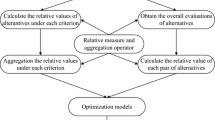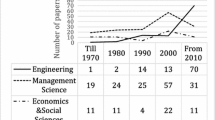Abstract
In choosing the best alternative with respect to multiple criteria, one approach is to estimate the criterion weights that influence the preferences of all the alternatives presented. When decision makers are able to make preference judgements based on the alternative as a whole, preference decomposition methods attempt to determine part-worths which represent the contribution of the criterion levels to the overall preference values. For each alternative, the sum of the part-worths estimates its overall preference value. In this work, we use linear goal programming to determine the part-worths of all the criterion levels. Simulation experiments are conducted to compare the performances of linear goal programming and ordinary least squares regression in preference decomposition and to examine the effectiveness of including constraints on the parameters. Our simulated results suggest that the linear goal programming model with constrained parameters has better predictive power.
Similar content being viewed by others
Author information
Authors and Affiliations
Rights and permissions
About this article
Cite this article
Lam, K., Choo, E. Goal Programming in Preference Decomposition. J Oper Res Soc 46, 205–213 (1995). https://doi.org/10.1057/jors.1995.25
Received:
Accepted:
Published:
Issue Date:
DOI: https://doi.org/10.1057/jors.1995.25




